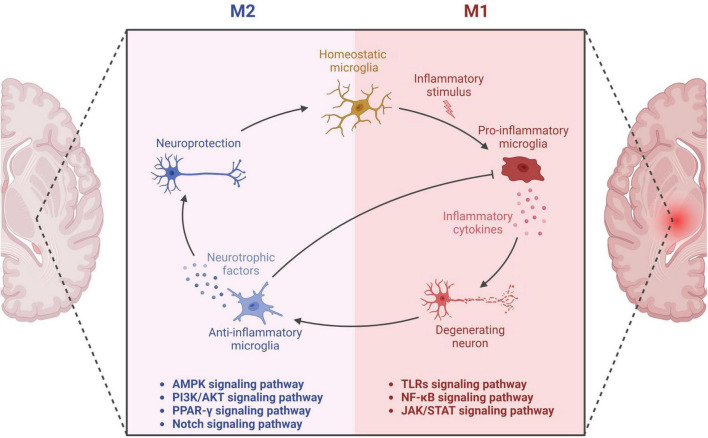FIGURE 1.
Microglial activation in neurodegeneration and neuroprotection. The diagram showcases the dual functions of microglia through M1 and M2 phenotypes. The M1 microglial phenotype promotes neuroinflammation through the secretion of pro-inflammatory factors, leading to neuronal damage. The related pathways involved in this process encompass Toll-like Receptors (TLRs), Nuclear Factor-kappa B (NF-κB), and the Janus Kinase/Signal Transducers and Activators of Transcription (JAK/STAT) pathway. On the other hand, the M2 phenotype of microglia secretes anti-inflammatory factors, thereby providing neuroprotective effects. This aspect is mediated through various signaling pathways including Adenosine Monophosphate-Activated Protein Kinase (AMPK), Phosphatidylinositol 3-Kinase/Protein Kinase B (PI3K/AKT), Peroxisome Proliferator-Activated Receptor Gamma (PPAR-γ), and the Notch pathway. Thus, the diagram delineates the dual role of microglia in neuronal health and disease, underlining the critical balance between the M1 and M2 states.

